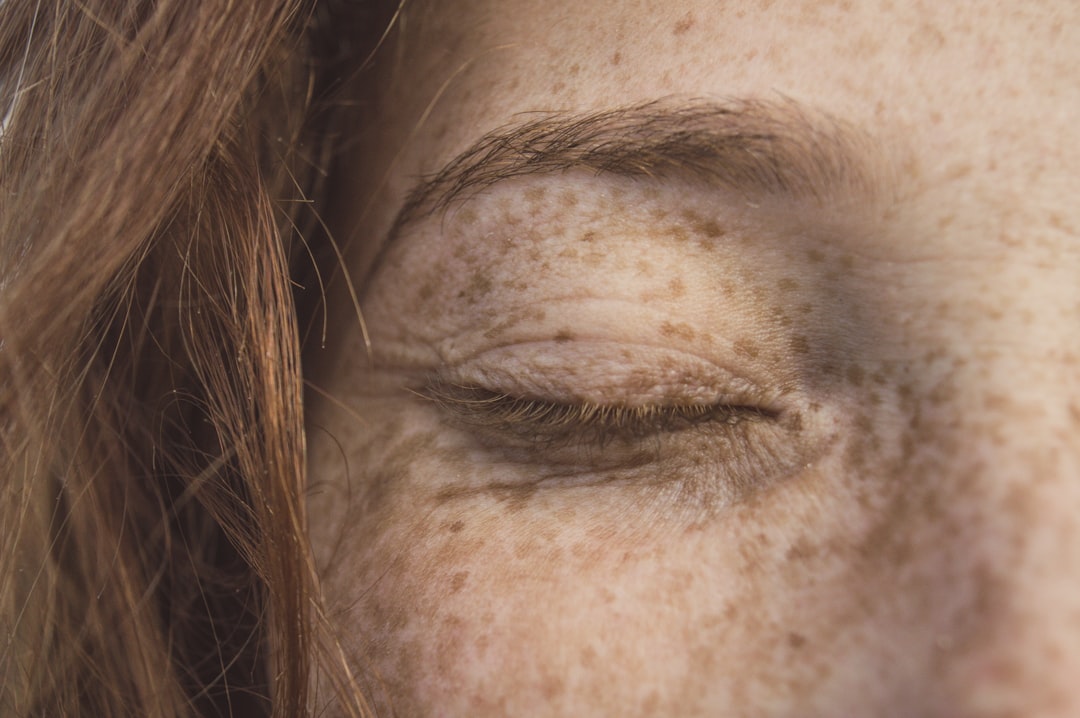Five Lessons Medical School Forgot to Mention.
Hard truths I stumbled upon, and you should know.

Before I was admitted into medical school, I had a naive and wide-eyed view of the profession. This perception justified the great financial and time cost of going through 4 years of education, and, in my case, 6 years of subsequent training and specialization. In total, that’s 10 years of medical education excluding the years as an undergraduate.
The debt I had incurred wasn’t only in money and time, but in all of the opportunities sacrificed along the way as a young man in his 20s, so that I could focus on studies.
But, ever since I started the first semester of medical school…I could sense that something was off. Maybe this was because of my rigorous undergraduate program, in which we were not only taught to memorize information, but to become something like engineers of our field of study.
To be able to breakdown problems, question our assumptions, and solve these problems from the ground up. For the education I received as an undergrad, I am grateful. It allowed me to see the cracks in medical education very early on.
Along this line of thought, here are 5 things I wish I was taught in medical school.
1) You cannot fight disease.
The word “fight” here is quite loaded. One could interpret this as "resist” or “oppose."
Indeed, these notions in medicine are as old as our recorded historical accounts of the medical arts, including by Hippocrates and Galen.
For example, if the body is too hot (by fever), you can facilitate it’s healing process by cooling it to the extent that the heat doesn’t overwhelm the body.
Today, it has become the norm to avoid any and all fever. I see it all the time.
“Oh, their temperature is 101 F - give them Tylenol.”
This is a bastardization of the Art.
Another example would be a cough so strong and persistent it leads to vomiting and cramps. Certainly, you may want to do something that tempers the cough.
But, this is not what I mean by fight.
Indeed, if you look at the historic timeline you can see there are shifts back and forth between resisting the body and facilitating the body.
Unfortunately, at the turn of the 19th century we began to see to the concept of “resist” taken to its extremes. This tendency was only amplified in the wake of Germ Theory, and again in Oncology.
This tendency to “resist” disease has now become a full-blown assault on the body and mind.
Multiple high-strength antibiotics for simple dysbiosis
Cut out any body part that seems to be upset with what you are doing it
Melting body parts by radiation, and assaulting the entirety of the body with chemotherapy
Immune suppression and modulation for an inflammatory condition for which the doctor is ignorant of the underlying cause
Potent neurological and cognitive toxins for “mood” disorders
I don’t think this is what the fathers of the medical arts were aiming towards.
This is war.
You cannot “fight” disease without assaulting the body.
You must facilitate the body’s capacity to heal and cultivate optimal health.
2) We exist in more dimensions than space.
One of the lessons they try to hammer home in medical school is the concept of understanding disease by anatomy.
When you know what is “normal” anatomy, you can figure out what’s wrong by seeing how the anatomy has changed.
You may think this is only intended to apply to things like trauma and congenital problems. A reasonable assumption.
But, once you take a closer look at the practice of medicine…you see this notion extended to a lot more areas of disease.
For example, most of pathology and radiology is trying to get a spatial visualization of body parts. Pathology does it on the micro-scale and radiology on the macro. But the concept is similar. Visualize the body part in question, and infer illness from how it looks.
In some cases, even the different histologic stains that are used by pathologists are also intended to visualize even more microscopic changes at the cellular level. But, it is still fundamentally a change in the dimension of space.
You can see how deep this assumption runs when you try to discuss the impact of other dimensions on our health. For instance, if you start discussing EMF and the ever increasing presence of electromagnetic radiation (e.g. artificial lighting) in our lives…most doctors will start to look at you with shifty eyes. As if you’re a nut.
But, we all know that these unseen dimensions of existence impact our health.
You know when:
You bask in the morning sun
Stand by a waterfall
Swim in the ocean
Hear a beautiful piece of music
Have heartbreak so severe you literally become sick, or even suffer a heart attack
Everyone knows we exist on these dimensions, and all of these dimensions impact our health. But, the medical industry is blind to it. In large part because those that fund this industry are also implicated in practices which poison these unseen dimensions of our lives.
3) Evidence-based Medicine is deeply flawed.
The crux of the flaw is this: humans are not aggregate data. You must treat people as individuals.
When I say that EBM is flawed, most doctors/researchers will simply assume I am talking about the mis-application of EBM. To an extent, this is true.
In the ideal world, EBM consists of making clinical decisions with the best available evidence in combination with unique characteristics of the patient. But, this is not how it’s practiced.
The standard criticism of EBM is the research upon which it is based. In practice, EBM relies heavily on systematic reviews and meta-analyses of clinical research. This is a fancy way of saying that all of the available research is aggregated based on some pre-defined criteria. Then, there is an attempt to uniformly analyze all of the data from these separate studies, in hopes to gain some insight into the question at hand.
As with all things, the devil lies in the details.
This is where the line “garbage in, garbage out” is thrown about the most.
If the research you aggregate and analyze is poorly conducted, then your meta-analysis will have unreliable and misleading results.
However, this is only the standard criticism of EBM.
But, there’s more.
To illustrate another problem, let me provide a hypothetical scenario.
You and 3 other friends have headaches
For yourself, drinking a cup of camomile tea works very well to relieve the headache.
For your 3 other friends, they have no benefit, or may even make it worse.
If you aggregate this data, you would probably come to the conclusion that at best, camomile tea has no effect on headaches, or at worst, may make headaches worse.
Now, as the person for whom this treatment works miraculously…does this meta-analysis matter?
Absolutely not. Nor should it.
And, this is the problem.
Evidence-based medicine seeks generalizable solutions at the expense of effective solutions. Another way to think about it is, EBM tends to find treatments with lower efficacy. But, that efficacy is more consistently found amongst the population of people studied.
But, wait…there’s more.
This tendency to find consistent but low-grade effects has a double-edged sword. Because, it can also impact how we assess side-effects of the studied treatment.
If for one of your friends camomile tea makes his headache worse…but the meta-analysis shows that on average it has no effect. Then…this can be very misleading to that one friend for whom it may be traumatizing.
Worse, when clinicians encounter the people for whom the treatment actually makes things worse…their concerns can be dismissed.
Think covid injections.
There are other problems, but we’ll save that for another time.
4) Melanoma is not caused by the Sun.
The assertion that the Sun (via its UV radiation) causes melanoma is mostly bullshit. This widespread belief arose from a study published in 1975 which had data from 9 states in the US.
Since then, almost every observational, experimental, and population-level research not only sheds doubt on this assertion, but actually points to a far more plausible reality.
In one study published in 2018, they looked at global data from over 50 countries, on 5 continents, including 44 of the United States:
“…increasing UV doses did not significantly correlate with increasing [melanoma] incidence for people with any skin type anywhere in the world.
Paradoxically, we found significant correlation between increasing melanoma and decreasing UVB doses in Europeans with skin types I-IV.” (these are the lightest skin tones of the Fitzpatrick scale)
If that isn’t enough for you, then consider this study conducted by the US Navy in 1990. They compared the rates of melanoma amongst its servicemen based on their occupational roles (indoors and outdoors).
“Compared with the US civilian population, personnel in indoor occupations had higher age-adjusted incidence of melanoma.”
“Persons who worked in occupations that required spending time both indoors and outdoors had the lowest rate.”
“Incidence of melanoma were higher on the trunk than on the more commonly sunlight-exposed head and arms.” (This was especially true of the population who worked outdoors.)
That final finding is very common. In fact, the vast majority of melanoma (between 70-90%) is diagnosed on body parts that get very little sun exposure.
The obvious follow-up question here is: since everyone is spending more time indoors…and when they go outside they lather themselves in sunscreen…why haven’t we eliminated melanoma?
Here’s one study which may shed some light:
Hairless mice were irradiated with LED blue light, white light, green light, and red light every day for one year.
“Skin cancer was induced only in the mice exposed to blue light.”
Are you starting to see the reality?
5) Cures exist, and they don’t have side-effects.
Since I was in medical school, I have almost never heard the word “cure.” This was such a pedestrian concept.
Disease were always “managed” or “treated.”
Never reversed. Never cured.
I’m here to tell you that cures exist. You can cure diseases. I have cured diseases.
In reality, many of those who have decided to take their health into their own hands have probably cured a disease.
For example, after seeing several gastroenterologists who independently diagnosed me with ulcerative colitis…but failed to “treat” or “manage” it…I decided to take matters into my own hands.
Then, I cured it.
They struggled for 4 years to “manage” this “lifelong autoimmune” disease.
Since taking matters into my own hands and expanding my vision from the pigeon-hole of modern medicine, I have been symptom free for almost 4 years now.
Knock on wood.
If you like this list of lessons I learned along my journey through medicine, I have a couple of more I’d like to share in the near future.






I had a sinus infection a couple of years ago and felt terrible. Didn’t go to doctor because I didn’t want the antibiotic they would surely prescribe. I took 1 gram of vitamin C (cheap ascorbic acid tablet) every 20 minutes. After 5 hours I felt the infection moving. It cleared fully in 7 hours. Felt like new. About 20 grams total, consistently dosed.
I told a doctor friend about it. He said the vitamin C didn’t cure my infection. In a shaming tone, he said that was a placebo effect. I replied “Well, that’s a win for me! I don’t care if it was the vitamin C or my belief, I cured myself in 7 hours without any adverse effects.”
They absolutely cannot value an anecdote. The indoctrination against it is too deeply embedded. They have been educated against it. I’m never mad at the doctors. I feel sorry for them. They got duped. The whole system is a shame. Heartbreaking, really.
“Evidence-based medicine seeks generalizable solutions at the expense of effective solutions.” ‼️